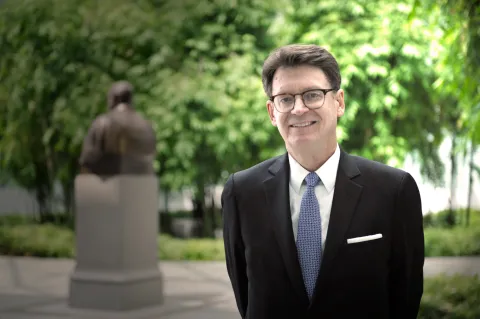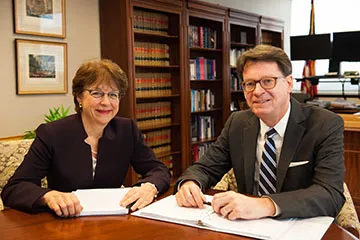
Director James C. Duff
Director's Message
This past year was a productive one for the Judicial Branch.
We are grateful that for the third year in a row, Congress provided the Judiciary with essentially full funding to carry out its constitutional responsibilities. As we work to improve the administration and management of the courts, we await the conclusion of the fiscal year 2017 appropriations process and hope that Congress continues to make the Third Branch a funding priority. It is clear that our cost containment initiatives are recognized by Congress. But we must also be aware that more austere budgets may be in our future, and we will need to continue to manage our resources accordingly. In the meantime, we are pleased with our progress to date on the cost containment initiatives, particularly on space reduction. We have achieved more than 75 percent of our goal of reducing court space by 3 percent in each circuit, which results in an annual savings of nearly $20 million.
Nine communities are a step closer to having safe, modern, and efficient courthouses as a result of Congress appropriating the necessary funds in late 2015 and then providing authorization for those courthouse projects in 2016. Many of these projects have been waiting for action for 15 years or longer. The Administrative Office of the U.S. Courts (AO), the General Services Administration (GSA), and judges and staff on each project are working closely together to ensure that the planning and construction are carried out in a responsible and efficient manner.
A 10-year study found that recidivism rates among federal offenders is declining, not only a testament to the work of the men and women who serve in our probation and pretrial services system, but also a reflection of the advanced technology and the evidence-based practices they are utilizing.
The Director’s Leadership Program completed its eighth year of operation and has built solid bridges between AO and court staff through temporary duty assignments and job exchanges. The partnership that exists today between the courts and AO benefits not only the Judiciary but also the public we serve.
The AO has been busy building other bridges through partnerships within the government as well. We have joined with GSA to work on the Service Validation Initiative to reduce costs and to improve and refine the services GSA provides to the courts.
Sound stewardship, consistent accountability, and fiscal responsibility are integral components of the daily work of the Judicial Branch. We remain vigilant in looking for ways to make court operations more efficient and to save money. And, like others in the public and private sectors, we are working aggressively to secure our IT systems from those with malevolent intentions.
Enhancing services to the public always is a Judiciary priority, and recent efforts include easing juror service through automated juror notifications and the testing of new juror kiosks, expanding our diversity outreach to potential employees, developing civics education programs to improve public understanding of the independence of the courts, and continuing the rollout of the next generation of our Case Management/Electronic Case Files System.
We will continue to advocate filling the most pressing judicial vacancies. Approximately 12 percent of all Article III judgeships are vacant. Additionally, the last omnibus judgeship bill was enacted in 1990; some courts have no vacancies but have a dire need for new judgeships. We are fortunate that dedicated senior judges are providing temporary relief and that our intra- and intercircuit assignment programs enable judges to help other courts when their own workloads permit.

Deputy Director Jill C. Sayenga and Director James C. Duff
The Administrative Office is committed to supporting the courts in their work. We strive to bring excellence, integrity, and innovation to this mission. For the past 10 years at the Administrative Office, one of our most dedicated leaders in this mission has been Deputy Director Jill C. Sayenga. Jill is well-known and highly respected throughout the Judiciary. She has served our branch with great distinction, all told, for nearly 30 years. We are saddened by her decision to retire in March 2017, but happy for her opportunity to enjoy some well-earned free time. She will be missed by us all for her wise counsel, depth of knowledge, and great dedication to the mission and values of the Third Branch.
Annual Report 2016
- Annual Report 2016
- Funding/Budget
- The Courts and Congress
- The Federal Bench in 2016
- Accountability and Resource Management
- Facilities and Security
- Public Outreach
- Court Operations and Case Management
- Defender Services
- Probation and Pretrial Services
- Human Resources
- Information Systems and Cybersecurity
- Recent and Proposed Amendments to the Federal Rules
- In Profile
